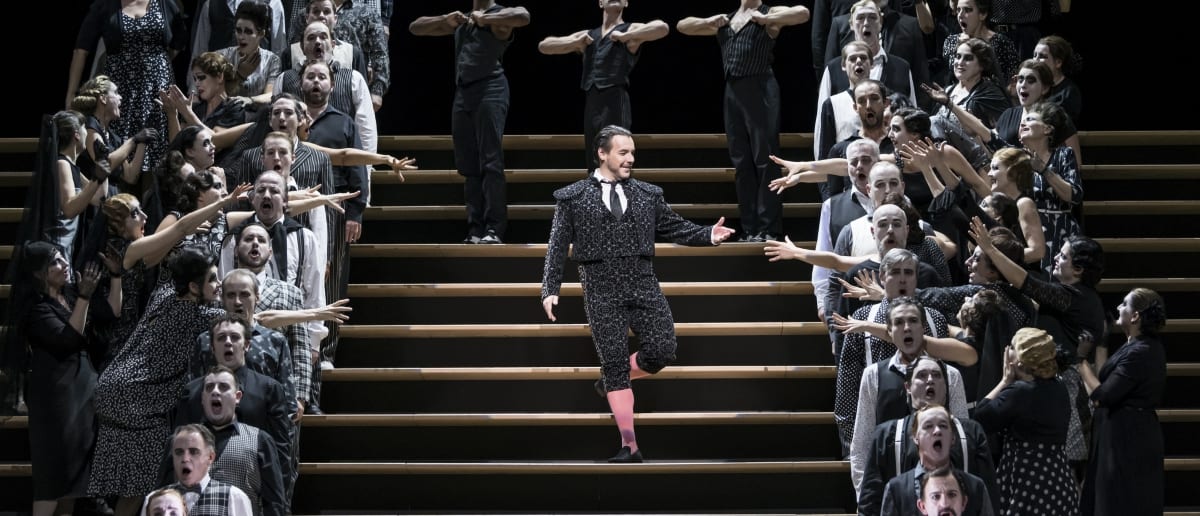Carmen the opera, as well as Carmen the character, have been throughout the years unique sources for reimagined versions across all art forms and mediums. Carmen has become associated with the quintessential Spanish femme-fatale of the 19th century. Her sexuality and appeal is tremendous. The production which is currently on at the Royal Opera House, and which first opened in Frankfurt in 2016, succeeds in re-introducing Bizet’s classical opera for a modern audience.
Director Barrie Kosky has created a radically minimal production. All four acts of the opera take place on the massive staircase which Katrin Lea Tag’s design has filled the stage with. The fact that there are no pauses between the acts, and no change of scenery after the interval, gives the production a flow and a Brechtian feel. Indeed, Kosky’s production feels very much inspired by the German practitioner Bertolt Brecht. In his practice, Brecht spoke of his need to keep audiences alert by giving them the opportunity to observe the world on stage under a different light, rather than turning the audiences into passive observers by representing everything on stage as it is in real life. Kosky and Lea Tag have achieved in creating a Carmen which looks and feels radical, minimal and contemporary. Lighting designer, Joachim Klein, creates stark lighting and bold geometrical shapes on stage. The lighting rarely looks ‘normal’, but instead the harsh lines contribute in creating a sense of theatricality. Kosky’s production, just like Brecht’s theatre, achieves in breaking the illusion of theatre and allows the audience to experience it as a heightened and, almost ritualistic, epic event.
Carmen’s sexuality is reinforced by the emptiness of the space which is only filled with crowds of bodies in geometrical shapes. The chorus either crowds around Carmen or move as far away as possible, thus isolating the femme-fatale who with her sensuality makes all men fall in love with her. Koksy has Carmen first appearing on a gorilla suit whilst singing her famous aria. The image is absurd and the effect very interesting in the way it satirises the objectification of the female body. There are many more touches of absurdism throughout the production, which, coupled with the stylised choreography of Otto Pichler, as well as the absurd make-up, leaves us with a playful black and white frame around Carmen. As the production premiered in Frankfurt, one can indeed notice the influences from German expressionism, as well as the tradition of film noir. The stage is a black and white canvas for designer Katrin Lea Tag, who plays beautifully with the absence of colour and creates stark images of passion, love and hatred.
Peter Brook had famously said that you only need an empty space and actors to create theatre, and director Barrie Kosky proves that in order to stage one of the most famous operas worldwide, you do not need much more than an empty space, a beautiful score, and a great ensemble. Kosky takes many risks with his staging, but I certainly salute him for his choices; after all, what is the point in directing classics if not to give them a breathe of fresh air? Bizet’s Carmen will always be one of the most beautiful operas to listen to, and Kosky has created a production which might displease the opera fans expecting nothing else than the normal staging, but it will certainly please the younger and risk-taking audiences!

